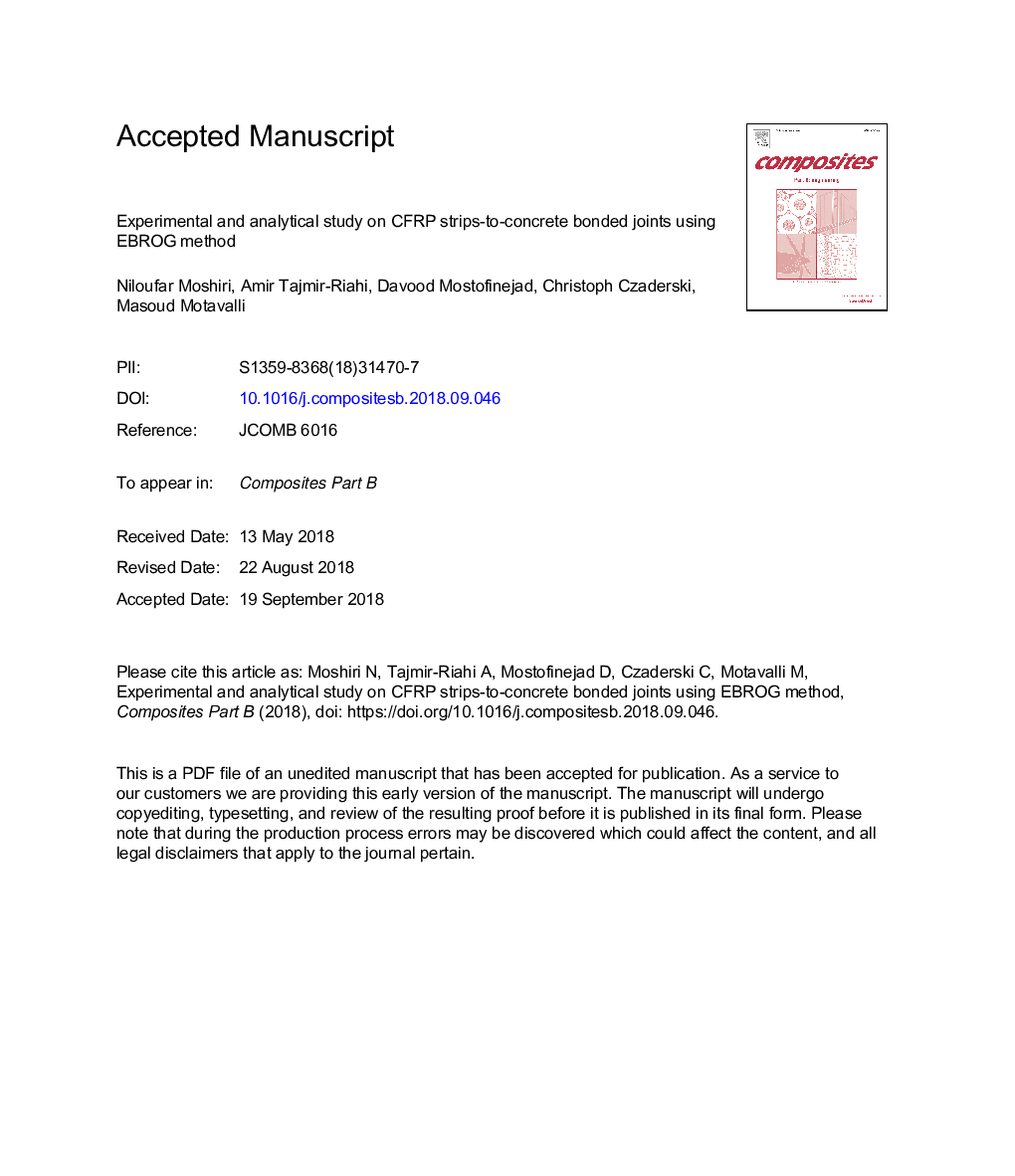| Article ID | Journal | Published Year | Pages | File Type |
|---|---|---|---|---|
| 11020726 | Composites Part B: Engineering | 2019 | 30 Pages |
Abstract
In this research, a set of 10 single lap-shear tests were carried out to assess the behavior of FRP-to-concrete bonded joints. Pre-cured CFRP strips were bonded to concrete using EBR and EBROG methods. Full-field displacement measurements were carried out through a 2D digital image correlation system, DIC. All tests were carried out at the Isfahan University of Technology in Iran. In addition, analytical modeling was conducted for the first time to obtain bond shear stress-slip behavior for EBROG methods. Based on experimental results, bond resistance in EBROG system increased considerably compared to EBR. For instance, EBROG method with two 5â¯Ãâ¯5â¯mm (widthâ¯Ãâ¯depth) grooves led to more than 90% increase in bond capacity, in comparison to EBR method. Furthermore, debonding in concrete substrate was eliminated when EBROG method was used. Cohesion failure in adhesive accompanied with FRP delamination was observed as the dominant failure mode. Analytical results revealed that bond shear stress resistance increased in EBROG joints compared to EBR ones. Moreover, the effective bond length increased in EBROG method when CFRP strips were utilized. Interfacial shear stresses, therefore, transferred to the concrete substrate through a larger bond area. So, the specimen resisted higher anchorage load and larger slip, and debonding was postponed.
Keywords
Related Topics
Physical Sciences and Engineering
Engineering
Engineering (General)
Authors
Niloufar Moshiri, Amir Tajmir-Riahi, Davood Mostofinejad, Christoph Czaderski, Masoud Motavalli,
